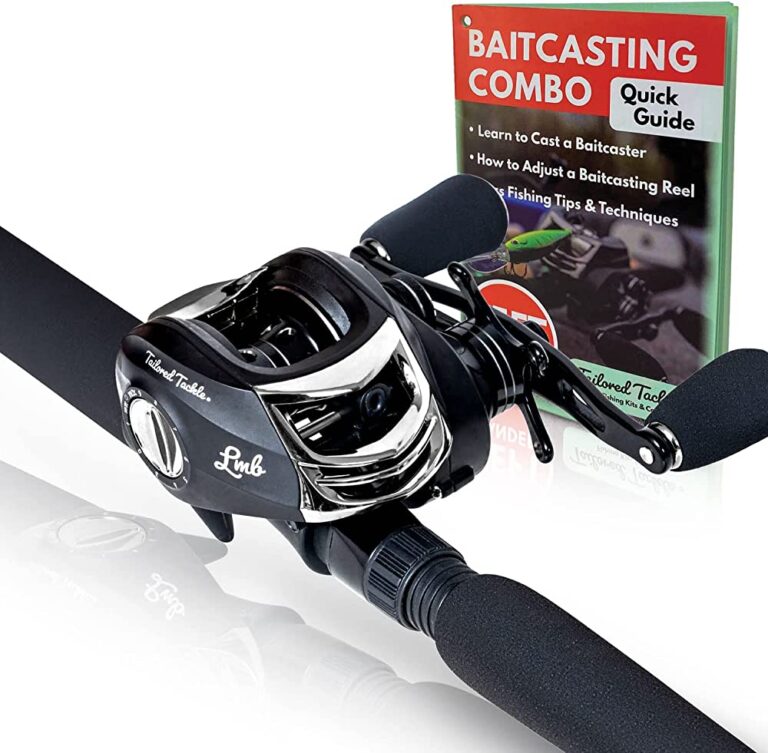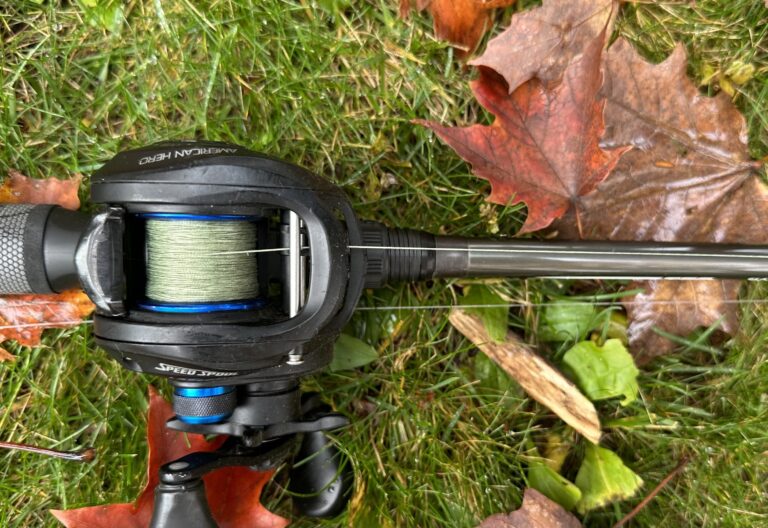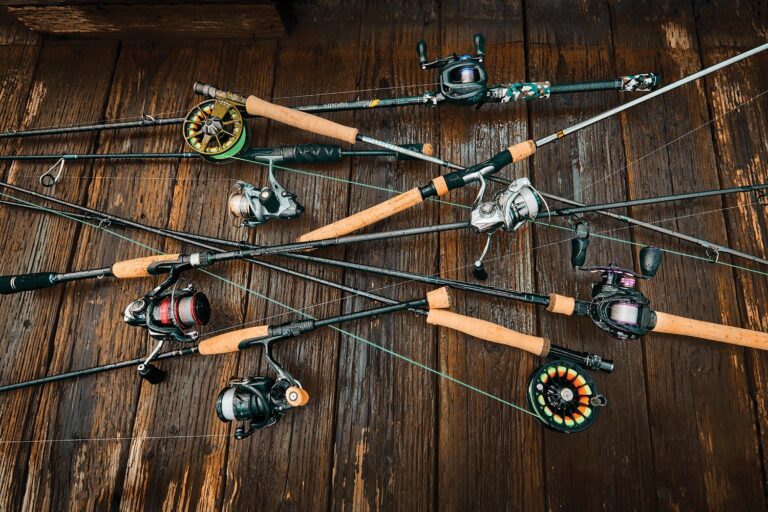Baitcasting reels can be difficult to use for beginners but can be mastered with practice. With careful handling and proper technique, baitcasting reels can offer precision and control, making them a popular choice for experienced anglers.
Baitcasting reels are known for their ability to provide greater accuracy and control when casting, but they can be challenging for novice anglers. The main difficulty lies in the need to manually control the speed and tension of the line during the cast, which requires practice to avoid backlashes and tangles.
However, with time and experience, anglers can become proficient in using baitcasting reels and enjoy the benefits they offer. In the following sections, we will explore the reasons why baitcasting reels can be challenging and provide tips for mastering their use. So, let’s dive in and unravel the intricacies of baitcasting reels!

Credit: latestintech.com
Understanding Baitcasting Reels: A Beginner’S Guide
Baitcasting reels can be a bit intimidating for beginners, but with a little practice and understanding, they can be a valuable tool in any angler’s arsenal. In this guide, we will break down the key components of a baitcasting reel, explain how they work, and discuss the advantages and learning curve associated with using them.
What Are Baitcasting Reels?
Baitcasting reels are a type of fishing reel commonly used by experienced anglers for casting heavier lures and lines. Unlike spinning reels, which have a fixed spool, baitcasting reels feature a revolving spool that rotates as the line is cast.
This design allows for greater casting accuracy and control, making them popular among anglers who target larger fish species.
How Do Baitcasting Reels Work?
Baitcasting reels operate on a principle known as “free spooling. ” When the angler casts their line, they must manually control the spool’s rotation using their thumb on the spool tension knob. This control prevents backlash, a common issue where the line becomes tangled and difficult to manage.
The angler must also use their thumb to regulate the line’s release during the cast, enabling them to achieve precise distance and accuracy.
Key Components Of A Baitcasting Reel
To better understand how a baitcasting reel works, let’s break down its key components:
- Spool: The revolving spool holds the fishing line and rotates during casting. It is responsible for releasing and retrieving the line.
- Handle: The handle allows the angler to retrieve the line after casting. Most modern baitcasting reels feature a comfortable grip and ergonomic design.
- Drag system: The drag system controls the amount of resistance on the line when a fish pulls. It ensures a smooth and controlled fight while preventing the line from breaking.
- Braking system: Baitcasting reels often come equipped with a braking system, which helps prevent backlash by applying resistance to the spool during the cast. This adjustable system allows anglers to fine-tune their casting performance.
Advantages Of Using Baitcasting Reels
Using a baitcasting reel offers several advantages for anglers:
- Increased accuracy: Baitcasting reels provide greater control and accuracy, making them ideal for precise casting and targeting specific areas.
- Casting distance: With practice, baitcasting reels can achieve longer casting distances compared to spinning reels, allowing anglers to cover more water and reach deeper areas.
- Line strength: Baitcasting reels can handle heavier lines and lures, making them suitable for catching larger fish species.
- Versatility: Baitcasting reels are versatile tools suitable for various fishing techniques, including freshwater and saltwater fishing.
- Sensitivity: The direct contact between the angler’s thumb and the spool allows for better sensitivity and immediate feedback when a fish strikes.
The Learning Curve Of Using Baitcasting Reels
While baitcasting reels offer many advantages, they do have a learning curve for beginners. Here are a few things to keep in mind:
- Practice makes perfect: Becoming proficient with a baitcasting reel requires practice and patience. Spend time practicing your casting technique and familiarizing yourself with the reel’s adjustments.
- Backlash prevention: Backlash can be frustrating, but with proper thumb control and adjusting the braking system, you can minimize and prevent it.
- Start with lighter lures: Begin with lighter lures and gradually work your way up to heavier ones. This approach will help you develop the necessary skills and avoid frustration.
- Seek guidance: If you’re finding it challenging to master baitcasting reels, seek guidance from experienced anglers or consider professional instruction to accelerate your learning process.
Remember, with enough practice and perseverance, mastering the baitcasting reel can open up a whole new world of fishing opportunities. So don’t be discouraged by the learning curve; embrace it and enjoy the rewards it brings.
Overcoming The Challenges Of Baitcasting Reels
Baitcasting reels are a popular choice among anglers due to their accuracy and casting distance. However, they can be intimidating for beginners and even experienced anglers may face some challenges when using them. In this section, we will discuss how to overcome these challenges and make the most out of your baitcasting reel.
Getting The Right Setup: Choosing The Right Reel And Rod Combination
- Select a baitcasting reel that suits your fishing style and target species.
- Consider the gear ratio, line capacity, and braking system of the reel.
- Pair your reel with a compatible fishing rod in terms of length, action, and power.
- Opt for a balanced setup to improve casting accuracy and overall performance.
Adjusting The Braking System For Improved Control
- Familiarize yourself with the different braking systems available on baitcasting reels, such as magnetic and centrifugal.
- Start with a higher braking setting to prevent backlash and gradually decrease it as you gain confidence and control.
- Experiment with different brake settings depending on the lure weight and wind conditions.
- Regularly check and adjust the braking system to maintain optimal control and prevent bird’s nests.
Mastering The Thumb Technique For Accurate Casting
- Practice controlling the spool with your thumb to regulate line flow during casting.
- Apply constant and gentle pressure on the spool while releasing the line to avoid overruns.
- Use your thumb as a brake to slow down the spool’s rotation before the lure hits the water.
- Gradually develop a delicate touch and timing to achieve precise and long-distance casts.
Dealing With Backlash: Tips To Avoid And Fix Backlash Issues
- Start with a slow and controlled casting motion to minimize the chances of backlash.
- Avoid using too much force or casting into strong winds, as it can lead to backlash.
- If a backlash occurs, resist the temptation to pull on the line forcefully, as it may worsen the tangle.
- Carefully pick out the loops and tangles using your fingers or a backlash pick, starting from the outside and working inward.
Practicing With Different Lure Types And Weights
- Experiment with various lure types, from lightweight finesse lures to heavier crankbaits and jigs.
- Each lure type requires different casting techniques and adjustments to the reel’s settings.
- Practice casting with different lure weights to understand their impact on casting distance and accuracy.
- Adjust the braking system and thumb pressure accordingly for optimal control with each type of lure.
Understanding The Importance Of Line Tension And Spool Control
- Maintain proper line tension throughout the casting process to minimize backlash and maximize casting distance.
- Use your thumb to control the spool’s rotation speed by increasing or decreasing pressure as needed.
- Avoid releasing the line abruptly during the cast, as it can lead to backlash or improper lure presentation.
- Regularly check the spool tension knob and adjust it according to the weight of the lure and prevailing fishing conditions.
By following these tips and practicing regularly, you can overcome the challenges associated with baitcasting reels. With time and experience, you’ll improve your casting accuracy and control, and unleash the full potential of your baitcasting setup. Happy fishing!
Expert Tips And Techniques For Using Baitcasting Reels
Using a baitcasting reel may seem daunting at first, but with the right techniques and practice, you can quickly become proficient in handling this versatile tool. In this section, we will discuss some expert tips and techniques that will help you improve your baitcasting reel skills and make the most out of your fishing experience.
Fine-Tuning Your Casting Technique: Proper Grip, Stance, And Body Mechanics
To cast with precision and accuracy, it is important to pay attention to your grip, stance, and body mechanics. Follow these tips to refine your casting technique:
- Grip: Hold the rod with a relaxed grip, ensuring your thumb rests lightly on the spool. This allows for better control and reduces the chance of backlash.
- Stance: Stand with your feet shoulder-width apart, ensuring stability and balance. Distribute your weight evenly for better control over the rod.
- Body mechanics: Engage your core and use your entire body to generate casting power. Rotate your torso, and transfer the weight from your back foot to your front foot during the casting motion. This will provide you with more leverage and a longer and more accurate cast.
Utilizing The Power Of Centrifugal Force For Longer Casting Distance
Centrifugal force can significantly impact your casting distance. Here are a few tips to utilize the power of centrifugal force:
- Adjusting the centrifugal brake: Set the centrifugal brake according to the weight of your lure. Increase the brake setting for heavier lures and decrease it for lighter ones. This will minimize backlash and maximize casting distance.
- Start with less force: Begin your cast with less force and gradually increase the speed as the lure gains momentum. This allows centrifugal force to build up gradually, resulting in longer casts.
- Smooth and accelerated cast: Maintain a smooth and accelerated casting motion, ensuring you release the lure at the right moment. The combination of speed and timing will enable the bait to travel further, courtesy of the centrifugal force.
Adjusting The Drag System For Optimal Performance
The drag system is an essential feature of a baitcasting reel. Properly adjusting it can help you land your target catch more effectively. Consider the following points:
- Setting the drag: Start by loosening the drag setting, then tighten it gradually until it offers just enough resistance when pulling the line with your hand. This will ensure the line doesn’t break when fighting a fish.
- Regular checks and adjustments: Frequently check the drag during fishing sessions, especially after catching larger fish or snagging on obstacles. Make any necessary adjustments to maintain optimal performance.
Mastering Different Retrieval Techniques: Slow Rolling, Twitching, And Jigging
To entice fish and mimic prey behavior, mastering different retrieval techniques is crucial. Here are some popular techniques and how to apply them:
- Slow rolling: Retrieve your lure at a slow and steady pace, mimicking injured prey. This technique is effective for catching predatory fish that are drawn to vulnerable prey.
- Twitching: Give your rod tip short and sharp jerks to create enticing movements in the water. The sudden, darting action can trigger strikes from aggressive fish.
- Jigging: Move your rod tip up and down in an erratic motion while reeling in the line. This technique imitates baitfish and can entice a wide range of fish species.
Remember to experiment with different retrieval techniques and adjust your approach based on the fish species you are targeting and their feeding habits.
Applying Advanced Baitcasting Techniques: Skipping, Pitching, And Flipping
Once you have mastered the basics, you can elevate your baitcasting skills by learning advanced techniques. Here are some techniques to try out:
- Skipping: Use a sidearm cast technique to skim your lure across the water’s surface. This technique works well when targeting fish hiding under overhangs, docks, or other structures close to the water.
- Pitching: Aim for precision with pitching by using an underhand motion to deliver your lure directly to a specific target. This technique is useful for accurately presenting your bait in tight spots, such as around vegetation or submerged structure.
- Flipping: Flip casting involves letting the lure fall vertically into the water with controlled accuracy. This technique enables you to target specific areas with great precision and is particularly effective in heavy cover and thick vegetation.
Maintenance And Care Tips For Prolonging The Lifespan Of Your Reel
To ensure your baitcasting reel remains in optimal condition for years to come, regular maintenance and care are essential. Consider these tips for prolonging the lifespan of your reel:
- Cleaning after use: Thoroughly clean your reel after each fishing session to remove dirt, sand, and saltwater residue. Use a gentle brush and reel lubricant to clean the exterior and moving parts.
- Regular lubrication: Apply reel lubricant to the bearings and moving parts periodically. This will help reduce friction and ensure smooth operation.
- Proper storage: Store your reel in a cool, dry place, preferably away from direct sunlight. Use a reel cover or case to protect it from dust and potential damage.
- Routine servicing: Consider taking your reel for professional servicing annually or when you notice any issues. This will help detect and address any internal problems and keep your reel in top shape.
By following these expert tips and techniques, you can enhance your baitcasting reel skills and enjoy a more successful and enjoyable fishing experience.
Conclusion
Overall, baitcasting reels can be a bit challenging to use, especially for beginners. However, with practice and patience, anyone can master the art of using them effectively. The key lies in understanding the mechanics of the reel, adjusting the settings correctly, and practicing different casting techniques.
One of the main advantages of baitcasting reels is their ability to provide greater accuracy and control over casting. This makes them a popular choice among experienced anglers who require precise lure placement. Additionally, baitcasters are sturdier and more durable than other reel types, making them suitable for handling larger fish species.
To make your baitcasting experience smoother, it’s crucial to choose the right reel for your needs and match it with a suitable rod. Investing in quality equipment and regularly maintaining it will also enhance your overall fishing experience. While baitcasting reels may have a steeper learning curve, their versatility and performance make them worth the effort.
With practice, dedication, and the right mindset, anyone can become proficient in using baitcasting reels and enjoy the rewards they bring to their fishing adventures.




